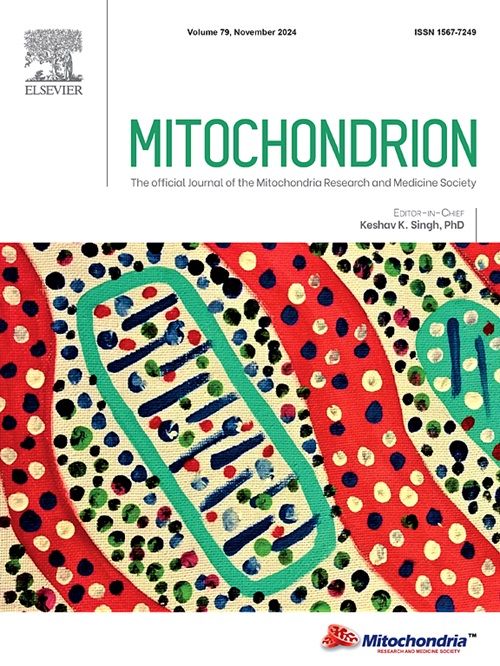Mitochondrial quality control and stress signaling pathways in the pathophysiology of cardio-renal diseases
IF 4.5
3区 生物学
Q2 CELL BIOLOGY
引用次数: 0
Abstract
Mitochondria are essential organelles for cellular function and have become a broad field of study. In cardio-renal diseases, it has been established that mitochondrial dysfunction is a primary mechanism leading to these pathologies. Under stress, mitochondria can develop stress response mechanisms to maintain mitochondrial quality control (MQC) and functions. In contrast, the perturbation of these mechanisms has been associated with the pathogenesis of several diseases. Thus, targeting specific pathways within MQC could offer a therapeutic avenue for protecting mitochondrial integrity. However, the mechanisms related to MQC and mitochondrial stress signaling in the cardio-renal axis have been poorly explored. The primary limitations include the lack of reproducibility in the experimental models of cardio-renal disease, the incomplete knowledge of molecules that generate bidirectional damage, and the temporality of the study models. Therefore, we believe that integration of all of those limitations, along with recent advances in MQC mechanisms (i.e., mitophagy), stress signaling pathways (e.g., integrated stress response, mitochondrial unfolded protein response, and mitochondrial protein import), associated pharmacology, and targeted therapeutic approaches could reveal what the deregulation of these mechanisms is like and provide ideas for generating strategies that seek to avoid the progression of cardio-renal diseases.
心肾疾病病理生理中的线粒体质量控制和应激信号通路
线粒体是细胞功能的重要细胞器,已成为一个广泛的研究领域。在心肾疾病中,已经确定线粒体功能障碍是导致这些病理的主要机制。在应激条件下,线粒体可以发展应激反应机制,维持线粒体质量控制(MQC)和功能。相反,这些机制的扰动与几种疾病的发病机制有关。因此,靶向MQC中的特定途径可能为保护线粒体完整性提供治疗途径。然而,与MQC和线粒体应激信号有关的机制在心肾轴上的探索很少。主要的限制包括心肾疾病的实验模型缺乏可重复性,对产生双向损伤的分子的不完全了解,以及研究模型的临时性。因此,我们相信,整合所有这些局限性,以及MQC机制(即,线粒体自噬),应激信号通路(例如,综合应激反应,线粒体未折叠蛋白反应和线粒体蛋白输入),相关药理学和靶向治疗方法的最新进展,可以揭示这些机制的放松管制是什么样的,并为产生寻求避免心肾疾病进展的策略提供思路。
本文章由计算机程序翻译,如有差异,请以英文原文为准。
求助全文
约1分钟内获得全文
求助全文
来源期刊

Mitochondrion
生物-细胞生物学
CiteScore
9.40
自引率
4.50%
发文量
86
审稿时长
13.6 weeks
期刊介绍:
Mitochondrion is a definitive, high profile, peer-reviewed international research journal. The scope of Mitochondrion is broad, reporting on basic science of mitochondria from all organisms and from basic research to pathology and clinical aspects of mitochondrial diseases. The journal welcomes original contributions from investigators working in diverse sub-disciplines such as evolution, biophysics, biochemistry, molecular and cell biology, genetics, pharmacology, toxicology, forensic science, programmed cell death, aging, cancer and clinical features of mitochondrial diseases.
 求助内容:
求助内容: 应助结果提醒方式:
应助结果提醒方式:


